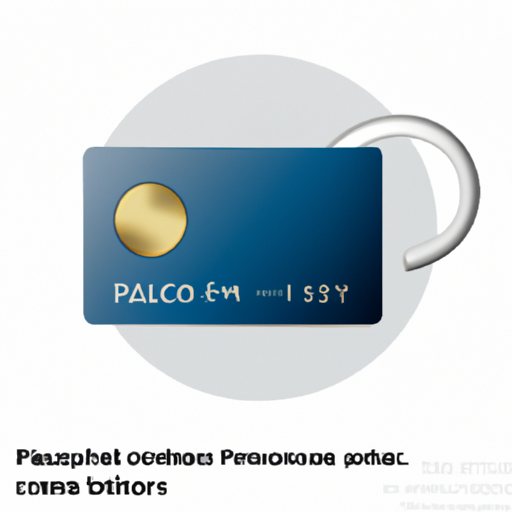In the fast-paced world of today’s digital transactions, contactless payments have become increasingly popular. With just a tap or a wave of a smartphone or card, customers can effortlessly make purchases. However, as convenient as this technology may be, it also introduces certain risks and vulnerabilities for both businesses and consumers. That’s where PCI compliance comes in. PCI compliance, short for Payment Card Industry Data Security Standard, ensures that businesses adhere to the necessary security measures to protect cardholder data during contactless payment transactions. In this article, we will explore the importance of PCI compliance for contactless payments and provide answers to some commonly asked questions in this area of law.
Choosing the Right Payment Solutions Provider
When it comes to accepting contactless payments, choosing the right payment solutions provider is crucial for the success and security of your business. Researching various providers and evaluating their security features should be your first step in this process. By ensuring that your provider is PCI compliant and offers robust security measures, you can protect your customers’ payment information and your business from potential data breaches.
Researching Payment Solutions Providers
To find the best payment solutions provider for your business, extensive research is key. Start by exploring reputable providers in the market and comparing their offerings. Look for providers with a proven track record in the industry and positive customer reviews. Additionally, consider the specific needs of your business and ensure that the provider you choose offers the necessary features and services to meet those needs.
Evaluating Security Features
Security should be a top priority when evaluating payment solutions providers. You need to ensure that your chosen provider offers robust security features to protect your customers’ sensitive payment data. Look for features such as tokenization, encryption, and secure transmission protocols. These technologies help ensure that payment information is securely stored and transmitted, reducing the risk of data breaches.
Ensuring PCI Compliance Certification
PCI compliance certification is a crucial requirement for any payment solutions provider. The Payment Card Industry Data Security Standard (PCI DSS) defines the security standards that businesses must adhere to when handling payment card data. Ensure that your chosen provider is PCI compliant and has the proper certification to handle contactless payments. This certification ensures that the provider has implemented the necessary security measures and processes to protect your business and customers.
Considering Customer Support Options
Customer support is an essential aspect of any payment solutions provider. In the event of an issue or security breach, prompt and reliable support can make a significant difference in minimizing the impact on your business. When evaluating payment solutions providers, consider their customer support options. Look for providers that offer 24/7 support, multiple communication channels, and a dedicated support team. This ensures that you can quickly resolve any issues that may arise and receive assistance when needed.

Understanding PCI Compliance and Contactless Payments
Before delving into the specific requirements of PCI compliance for contactless payments, it is essential to understand the concepts of PCI compliance and contactless payments.
Defining PCI Compliance
PCI compliance refers to adherence to the Payment Card Industry Data Security Standard (PCI DSS), which is a set of security standards designed to protect cardholder data. The PCI DSS encompasses various security requirements, including network security, employee training, and regular security monitoring. Achieving and maintaining PCI compliance is crucial for businesses that process, store, or transmit payment card data.
Explaining Contactless Payments
Contactless payments provide a convenient and secure way for customers to make transactions using various devices, such as contactless cards, mobile wallets, or wearable devices. These payments rely on Near Field Communication (NFC) technology, allowing customers to tap or wave their device near a contactless-enabled terminal to complete a transaction. Contactless payments eliminate the need for physical contact and can expedite the checkout process, enhancing the overall customer experience.
Highlighting the Benefits of Contactless Payments
Contactless payments offer numerous benefits for businesses and customers alike. For businesses, accepting contactless payments can improve efficiency by speeding up transaction times. It also reduces the reliance on physical cash and facilitates easier record-keeping. Contactless payments can also enhance the customer experience, as they offer a convenient and fast way to pay. Additionally, contactless payments contribute to enhanced security by reducing the risk of card skimming and counterfeit fraud.
PCI Compliance Requirements for Contactless Payments
Achieving and maintaining PCI compliance for contactless payments involves adhering to specific security requirements. These requirements aim to ensure the security and protection of cardholder data during contactless payment transactions.
Data Encryption
One of the key requirements for PCI compliance is data encryption. All cardholder data, including contactless payment data, must be encrypted both in transit and at rest. Encryption helps protect sensitive information from unauthorized access and ensures that even if the data is intercepted, it remains unreadable.
Secure Payment Processing
Secure payment processing is another critical requirement for PCI compliance. Payment processing systems and infrastructure must employ secure methods to handle contactless payments. This includes utilizing secure payment gateways, point-of-sale (POS) terminals, and secure networks to transmit payment data.
Secure Network Infrastructure
A secure network infrastructure is vital for maintaining PCI compliance. Businesses must implement and maintain secure networks to protect cardholder data during contactless payment transactions. This involves implementing firewalls, segmenting networks, and regularly monitoring network traffic for potential vulnerabilities.
Access Control Measures
PCI compliance also requires the implementation of access control measures. Businesses must ensure that access to systems and cardholder data is restricted to authorized personnel only. This involves maintaining unique user IDs, implementing strong passwords, and regularly reviewing and updating access rights.
Regular Security Monitoring
Regular security monitoring is crucial to detect and prevent potential security breaches. Businesses must actively monitor and test their security systems and processes to identify vulnerabilities or suspicious activity. By implementing stringent monitoring practices, businesses can quickly detect and respond to any security threats or breaches.

Maintenance of Security Policies and Procedures
PCI compliance necessitates the development and maintenance of comprehensive security policies and procedures. Businesses must establish and enforce security policies that align with the PCI DSS requirements. These policies should cover areas such as data storage, access control, network security, and employee training. Regular review and updates to these policies and procedures are essential to ensure continued compliance.
Steps to Achieve PCI Compliance for Contactless Payments
To achieve PCI compliance for contactless payments, businesses must follow a series of steps to assess and enhance their security measures.
Conducting a PCI Compliance Audit
The first step is to conduct a PCI compliance audit to assess the current security measures and identify any vulnerabilities. This involves reviewing the business’s infrastructure, network, and systems to ensure they align with the PCI DSS requirements. It is recommended to engage a qualified third-party auditor to conduct the assessment thoroughly.
Fixing Vulnerabilities and Weaknesses
Once vulnerabilities and weaknesses are identified, businesses must take immediate action to rectify them. This may involve implementing software patches, updating hardware, or reconfiguring network settings. It is essential to address any vulnerabilities promptly to minimize the risk of a security breach.
Implementing a Secure Payment Environment
Creating a secure payment environment is crucial for PCI compliance. This involves implementing secure payment processing systems, using encryption technologies, and securing the network infrastructure. By creating a robust and secure payment environment, businesses can better protect cardholder data during contactless payment transactions.

Providing Employee Training on Security Protocols
Employee training on security protocols is essential to maintaining PCI compliance. Businesses must educate their employees on the importance of security measures, such as password hygiene, recognizing phishing attempts, and adhering to security policies. Regular training sessions should be conducted to keep employees informed about the latest security practices and potential threats.
Documenting and Maintaining Compliance Efforts
Documentation plays a vital role in achieving and maintaining PCI compliance. Businesses must maintain detailed records of their compliance efforts, including audits, security policies, training sessions, and security incidents. These records serve as evidence of compliance and demonstrate a commitment to maintaining a secure payment environment.
Maintaining PCI Compliance in Contactless Payment Systems
To ensure ongoing PCI compliance in contactless payment systems, businesses must implement specific practices to maintain security and protect sensitive data.
Regularly Updating Hardware and Software
Keeping hardware and software up to date is essential for maintaining PCI compliance. Regularly apply software updates and security patches to address any known vulnerabilities. Similarly, regularly review and update hardware components, such as point-of-sale systems and payment terminals, to ensure they meet the latest security requirements.
Monitoring Payment System for Security Breaches
Continuously monitoring the payment system for security breaches is crucial. Implement tools and processes to actively monitor network traffic, conduct regular scans for vulnerabilities, and respond to potential security incidents promptly. Monitoring enables businesses to detect and mitigate potential risks, preventing data breaches and ensuring ongoing compliance.
Enforcing Access Control Policies
Strict access control policies should be enforced to reduce the risk of unauthorized access to sensitive data. This includes granting access privileges based on job roles, implementing multi-factor authentication, and regularly reviewing access rights. By enforcing access control policies, businesses can minimize the risk of data breaches and maintain PCI compliance.
Managing Vendor Compliance
If your business works with third-party vendors that handle contactless payments, it is crucial to ensure their compliance with PCI standards. Regularly assess your vendors’ security practices and ensure they meet the necessary requirements. Have clear contracts and agreements in place that define their responsibilities regarding data security and compliance.
Periodic PCI Compliance Assessments
PCI compliance is an ongoing process, and businesses should conduct periodic PCI compliance assessments to ensure the continued security of their contactless payment systems. Regularly engage third-party auditors to assess your systems, processes, and policies, and address any potential issues identified. This proactive approach helps businesses stay ahead of evolving security threats and maintain compliance.
Penalties and Consequences for Non-Compliance
Non-compliance with PCI standards can have severe consequences for businesses. It is crucial to understand the potential penalties and consequences to prioritize PCI compliance for contactless payments.
Fines and Monetary Penalties
Failure to comply with PCI standards can result in significant fines and monetary penalties imposed by card brands and payment processors. These fines can vary depending on the nature and severity of the violation, with potential costs ranging from thousands to millions of dollars. The financial burden of non-compliance can significantly impact a business’s operations and profitability.
Loss of Customer Trust and Reputation
Non-compliance can also lead to a loss of customer trust and damage the reputation of your business. Data breaches and security incidents erode customer confidence in your ability to protect their payment information. This loss of trust can result in decreased customer loyalty, negative publicity, and a decline in your business’s reputation within the market.
Legal Consequences and Lawsuits
Non-compliance with PCI standards may expose businesses to legal consequences and lawsuits. In the event of a data breach or security incident, businesses can face legal action from affected customers, regulatory authorities, or payment card brands. These legal proceedings can be time-consuming, costly, and detrimental to your business’s financial stability and reputation.
Termination of Merchant Account
Failure to comply with PCI standards can result in the termination of your merchant account. Payment processors and card brands have the right to terminate their relationship with businesses that do not meet the necessary security requirements. Losing your merchant account can severely impact your ability to accept contactless payments and conduct business effectively.
Inability to Accept Contactless Payments
Non-compliance with PCI standards can ultimately result in the inability to accept contactless payments altogether. Regulatory authorities and payment processors may restrict or suspend your ability to process contactless payments until you achieve full PCI compliance. This can have a significant impact on your business’s revenue and growth potential.
Frequently Asked Questions
What is PCI compliance?
PCI compliance refers to the adherence of businesses to the Payment Card Industry Data Security Standard (PCI DSS). These standards aim to protect cardholder data and ensure secure payment processing.
Why is PCI compliance important for contactless payments?
PCI compliance is crucial for contactless payments as it ensures the security and protection of cardholder data during these transactions. It helps businesses mitigate the risk of data breaches and provides customers with assurance that their payment information is being handled securely.
What are the consequences of non-compliance?
Non-compliance with PCI standards can result in fines, loss of customer trust, legal consequences, termination of merchant accounts, and the inability to accept contactless payments.
How can I ensure my contactless payment system is PCI compliant?
To ensure PCI compliance for your contactless payment system, choose a reputable payment solutions provider that is PCI compliant. Follow the necessary steps to achieve and maintain compliance, such as conducting audits, fixing vulnerabilities, implementing secure payment environments, providing employee training, and documenting compliance efforts.
What steps should I take to achieve PCI compliance?
To achieve PCI compliance, businesses should conduct a PCI compliance audit, fix vulnerabilities, implement a secure payment environment, provide employee training, and document and maintain compliance efforts. Regularly update hardware and software, monitor the payment system, enforce access control policies, manage vendor compliance, and conduct periodic assessments to ensure ongoing compliance.
